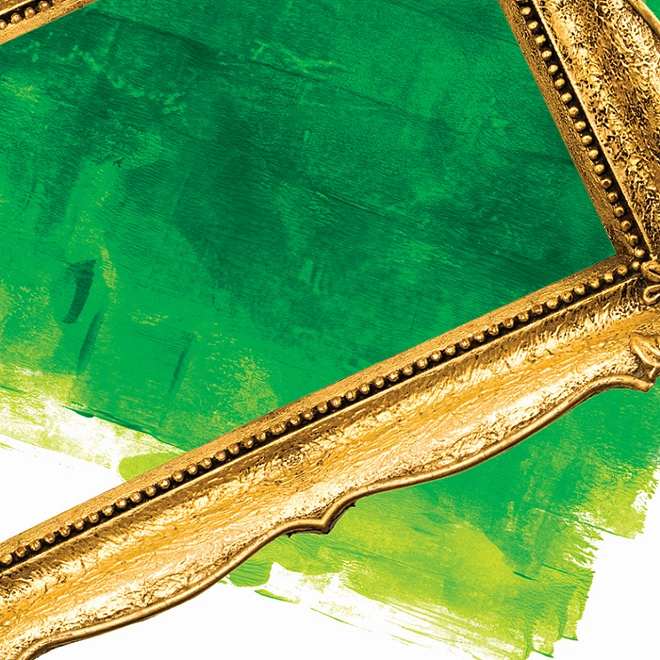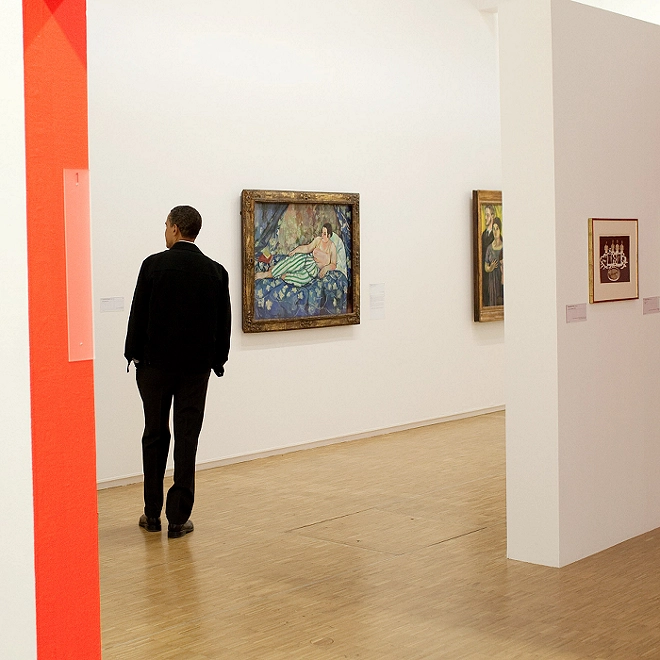8th Deloitte Private and ArtTactic Art & Finance Report
A close look at the evolving Art & Finance industry
NEW Art & Finance Report 2023 - 8th edition
The 2023 edition of the biennial Art & Finance Report arrives during economic, environmental and geopolitical uncertainty. Being able to adapt and innovate under these circumstances is more important than ever, and the search for purpose and asset diversification is even more acute.
As with previous editions, our goal is to highlight the continued evolution of the art and finance industry during both good and difficult periods, opening our readers’ eyes to possible pathways that can benefit all stakeholders across the art, culture and finance ecosystem.
The Deloitte Private Art & Finance initiative encourages collaboration between stakeholders at the intersection of art business, culture and finance. We believe that, by providing more transparency and awareness around motivations, obstacles, needs and drivers in the art and finance industry, we can catalyze and improve dialogue, inspire new models and solutions, and amplify the role and importance of culture in improving our lives and society.
The 2023 G20 summit in India reassessed the economic significance and societal value of the cultural and creative sectors to support inclusive growth, decent work, and Sustainable Development Goals (SDGs). Wealth managers dealing with art and collectible assets have an opportunity to strategically engage with art and cultural heritage assets and in new conversations with clients about leveraging their art and cultural wealth to achieve both financial and societal value.
Since the Art & Finance initiative was established in 2008 and the first report published in 2011, the industry has changed immensely. In 2022, ultra-high net worth individuals’ (UHNWIs’) wealth associated with art and collectibles is estimated at US$2.174 trillion. This year’s report predicts that this figure could grow to an estimated US$2.861 trillion in 2026, due to the increased number of UHNWIs across the world and their increased allocation of wealth to art and collectibles. As luxury assets become part of the art and finance landscape, a larger portion of wealth will be managed by the sector. Approximately 63% of surveyed wealth managers have already integrated art into their wealth management offering.
We want to thank the experts for their invaluable contributions and survey participants and art market stakeholders (wealth managers, collectors and art professionals) that continue to share their views and opinions with us. In this edition, 55 leading experts shared insights through 31 articles and interviews (13 from 9 different Deloitte offices) and 435 art and finance stakeholders (ranging from art professionals, family offices, wealth managers, to collectors and representing locales across the world) were surveyed.
In 2023, we take a 12-year retrospective look at our findings. Despite continued challenges in transparency, regulations and business practice modernization, the industry continues to innovate and evolve. It is well-positioned to reap the benefits of the coming global wealth transfer and a finance industry increasingly oriented to holistic wealth management.
We hope this report will give you a richer understanding of the complex nature of the art and finance ecosystem, the key change agents and the role you can play in shaping its future.
Click here to download the report.
Art & Finance Report 2021 - 7th edition
The 2021 edition of the Art & Finance report arrived at an uncertain and tumultuous time, amid COVID-19, climate change and other global challenges. The question is, what role can art and culture play in tackling many of these challenges? On 2021, the G20 Ministers of Culture agreed for the first time on a G20 Declaration on Culture, which firmly positions culture as an engine for sustainable socioeconomic impact.
In its modest way, the Deloitte Art & Finance initiative aims to be part of this change and transformation. Uniquely positioned at the intersection between art business, culture and finance, its goal is to elevate the dialogue between stakeholders; encourage new models around finance and sustainable investment in art and culture; and amplify the role and importance of culture in improving our lives and society. This seventh edition of the report, in collaboration with ArtTactic, demonstrates how our understanding of the art and finance ecosystem has greatly evolved.
Please Note: As communicated in a media statement in 2022, we draw your attention to the fact that Deloitte has separated its practice in Russia and Belarus from the global network of member firms and will no longer operate in these countries.
Click here to download the report.
Click here to download the key findings
Art & Finance Report 2019 - 6th edition
Since launching the initiative in 2011, we have seen the global art market ebb and flow: from the aftermath of the financial crisis to the peak of the market in 2016. In parallel, we have also monitored how the wealth management sector is increasingly responding to competitive pressures in its own industry, and the role art and collectible wealth are playing in the transition to a more holistic wealth management model.
Since our 2017 report, external factors, such as increasing political and economic uncertainty, rapid technological progress, climate change, and social inequality have dominated the daily headlines. We live in a changing world, fraught with uncertainty. This is the context in which we should view the global art and finance industry—the crucial intersection between culture and wealth.
We hope that this report will help to raise awareness of emerging developments and initiatives within the art and finance industry. Transparency, regulation, and technology trends will play an important role in the future of the art and finance industry. However, collaboration between all stakeholders (art professionals, young and old collectors, and wealth managers) is essential if we are to address the pressing issues and challenges we face, particularly increasing trust in the art market today and in years to come.
Click here to download the report.
Art & Finance Report 2017 - 5th edition
It has been exciting to follow and monitor how the Art & Finance industry has evolved over the last six years. In this edition, we have compared the findings and developments from the previous four editions.
Increasing competition in the wealth management industry has put emphasis on a more holistic wealth management model, which has become a key driver and motivation for incorporating art-related wealth into the service offering.
A lot has happened since we launched the inaugural issue in 2011. One major change has been a shift in the primary focus on art investment toward issues around the management of art-related wealth, including art-secured lending, estate planning, art advisory, and risk management. This year, we are encouraged to see both a confirmation of the increasing convergence between collectors, art professionals, and wealth managers on the role of art in a wealth management service offering, as well as a convergence of stakeholder initiatives to improve art market transparency and infrastructure around the management of art and collectible wealth. Many of these tools and services are mentioned in this report.
Click here to download the report.
Click here to download the key findings.
Art & Finance Report 2016 - 4th edition
The 2016 Art & Finance report comes at a challenging time for both the art market and the wealth management industry. With the art market growth showing signs of slowing toward the end of 2015 and in early 2016, combined with slower economic growth, increasing volatility in the financial markets, and geopolitical uncertainty, the picture is becoming more complex and unpredictable.
Click here to download the report.
Art & Finance Report 2014 - 3rd edition
Based on the findings of this report, the wealth management industry is clearly taking a more strategic view on art as an asset class and how it might be used as a tool to build stronger and deeper relationships with clients, in an increasingly competitive marketplace.
Click here to download the report.
Art & Finance Report 2013 - 2nd edition
Since the first report, we observed significant shifts in perceptions of the role of art in finance, as well as the role of finance in art. What emerges from the 2013 report is a gradual convergence in the motivation and interests of key stakeholders in the art market and wealth management community as regards art as an asset class, and this trend is driven by the client.
Click here to download the report.
Art & Finance Report 2011 - 1st edition
This first report was focused on establishing a better understanding of the boundaries of the emerging Art & Finance industry, the concerns and motivations of its stakeholders and the potential of art as an asset class among the wealth management community.
Click here to dwonload the report.



